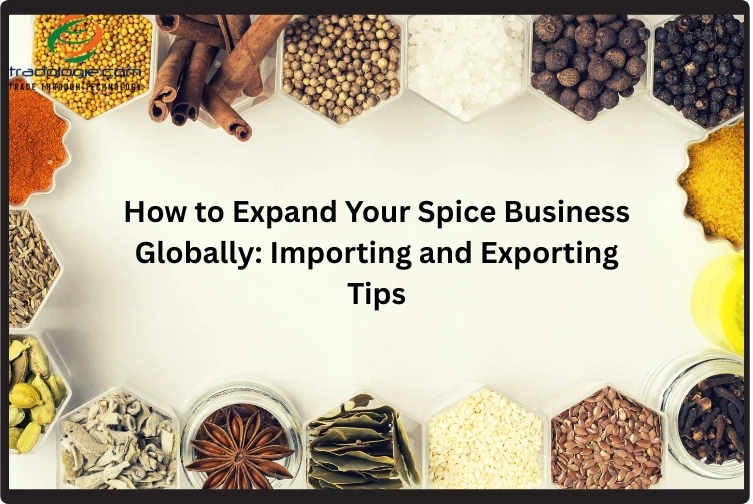For spice exporters,adopting a bulk spices strategy offers an immediate pathway to margin optimization, supply chain resilience, and brand differentiation. Whether sourcing at scale for private‑label packs or ethnic food ranges, bulk formats provide a reliable entry point—and growth avenue—for both small retailers and national chains.
1. Bulk Format = Cost‑Efficiency at Scale
Spices sold in bulk significantly reduce per-unit packaging and logistical costs whether whole, cracked, or powdered. Sourcing coriander, cumin, or turmeric in 25 - 50 kg sacks helps sharpen the cost of goods sold (COGS) and supports value-based pricing for private-label or food service lines for spices buyers. This economic leverage is especially potent when combined with refinery integration or post-import blending facilities.
2. Margin Control Through Volume Leverage
Retailers purchasing in bulk from spices exporters gain volume-based negotiation power. International tender terms (FOB / CIF) offer margin predictability—especially when secured via contract pricing tied to origin benchmarks. Distributors locking in multi-metric ton contracts enjoy improved transparency, hedged shipping costs, and stable supply—even amid seasonal spikes or harvest disruption.
3. Sourcing Diversity, Strategic Risk Management
Bulk sourcing interfaces seamlessly with multi-origin approaches. When India’s monsoon impacts cumin production, importers can pivot to Ethiopia or Vietnam. Likewise, sourcing whole black pepper from Vietnam alongside Sri Lanka origin assures continuity. This diversification strategy addresses crop failure, regional climate, or geopolitical shocks without jeopardizing product range or contract fulfilment.
4. Catering to Segmented Buyer Needs
Each retail channel demands different spice formats or grades:
- Private-label cooks expect finely milled turmeric with sub-LOD ash levels.
- Ethnic-food retailers rely on coarser whole seeds for visual appeal.
- Foodservice operators may use cracked chili or pre-blended masalas by the tonne.
Bulk gives suppliers the flexibility to customize inventory based on buyer profiles—without a small-pack premium.
5. Commercial Appeal Backed by Industry Trends
Spices take advantage of broader market momentum. The global seasoning and spices sector was estimated at USD 21.7 billion in 2023, with an 8.9% CAGR projected through 2030. Spice import volume into Europe grew at a 1.0% CAGR between 2019 and 2023, with high-value products continuing to attract food processors.
Even niche HS codes—like crushed coriander seeds—move USD 57.6 million in bulk in 2023 oec.world. That volume underscores the premium value locked in trading familiar yet regionally diverse spice commodities in bulk formats.
6. Brand Differentiation via Custom Blends
Bulk spices empower manufacturers to develop unique spice blends that align with brand themes (e.g., “Mediterranean rub” or “Garam masala”), nutritional angles (e.g., turmeric for immunity), or culinary niches. This ability to innovate product lines enhances shelf presence and fosters loyalty. This is especially true when backed by origin traceability and blend consistency.
7. Improved Supply Metrics: Shelf Life & QC
Whole and cracked bulk spices typically outperform powdered formats in shelf life and contamination control. Less surface area means fewer mycotoxin or microbial concerns. For spices buyers, this translates to lower inventory write-offs, easier QC management, and simplified shipping logistics—especially when pre-certified for heavy metals or residues.
8. Strategic Procurement Through Bulk Contracts
Bulk procurement supports a range of B2B contract models:
- Forward contracts indexed to CBOT, New York, or Black Sea spot pricing
- Flexible CIF/FOB layer-based tender structures for pricing resilience
- Long-term vendor agreements including logistics, warehousing, and blended SKU support
Bulk strategy enables spice exporters to build repeatable frameworks, granting bonds on cost and origin.
9. Operational Simplicity for Retailers & Food Operators
Smaller retailers gain operational simplicity: bulk deliveries can be re-sacked into retail-grade formats without reshuffling supplier relationships. A mid-sized chain can operate a central packing line reconditioning 500 kg to 50 g packs—eliminating reliance on branded finished-goods suppliers, while reducing unit cost.
10. Sustainability & Bulk Sourcing
Bulk packaging—often using recyclable jute or big bags—supports sustainability goals while aligning with buyer expectations. Forward-thinking bulk spices buyers are packaging in reusable containers, reducing post-consumer waste, and meeting ESG criteria. This becomes increasingly valuable when pitching to large‑scale procurement teams with compliance mandates.
Conclusion
Bulk spices are more than just cost-effective—they are a strategic lever for profitability, supply chain resilience, and brand growth. For spice exporters, the bulk format allows tailored risk management, consistent margin capture, and market agility. For bulk spices importers and spices buyers, it offers unmatched product flexibility, operational ease, and pricing transparency.
By anchoring their portfolios in bulk sourcing, both large and small retailers position themselves to outperform in an increasingly competitive, volatility-prone spice market.


